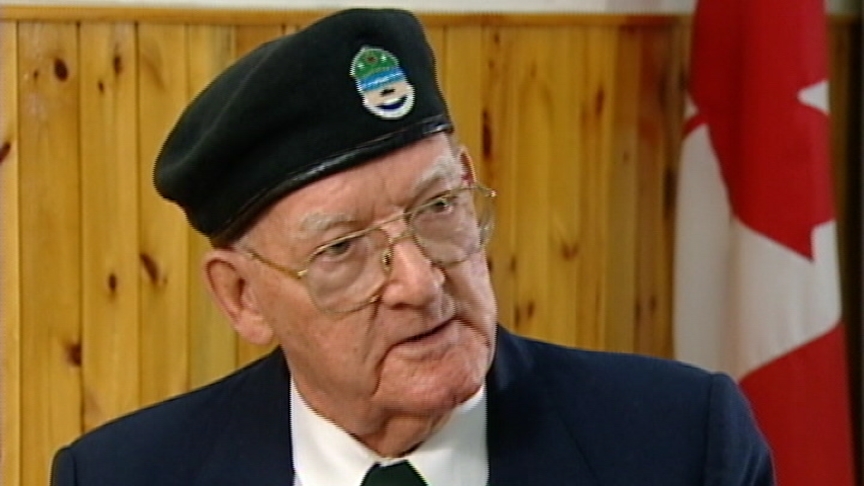Responsibilities and Duties of a Signalman.
Heroes Remember
Responsibilities and Duties of a Signalman.
Transcript
Description
Mr. Munn describes the duties that a signaller would have both in the field on manoeuvres and back at headquarters within the regiment.
Lee Munn
Mr. Munn was born the oldest child of four in Boiestown, New Brunswick. He had one brother and two sisters. His father, a Veteran of the First World War, was a victim of gas attacks in Ypres, Belgium, and died in 1926 due to complications from the gas attack. The family survived through the 1930s on the pension that the Canadian Army issued to the widow and family. Mr. Munn finished high school and decided to work briefly in the woods before he joined the Canadian Army in Fredericton. From there he did his basic training in Kentville, Nova Scotia. He also took a signal course after completing his basic training. Mr. Munn left for England aboard the Dutchess of York, crossing in roughly six to seven days, landing in Greenock, Scotland, and then on to Aldershot, England. While there he continued to do signal training and drill before he was assigned to the Carleton York Regiment as a replacement during the beginning of the Battle of Britain. Mr. Munn was eventually moved to the CCS Royal Canadian Corp of Signals and was assigned to serve in Italy. He was transported aboard a Polish ship from England to Sicily. After serving in Italy, Mr. Munn was assigned to serve on the Western Front in Holland. After the end of the war Mr. Munn returned to Canada aboard a troop ship. He landed in Quebec City and then took the train back to New Brunswick. After the war Mr. Munn worked in the woods for a brief period and then went back to school in Moncton to get a trade as an electrician.
Meta Data
- Medium:
- Video
- Owner:
- Veterans Affairs Canada
- Duration:
- 01:27
- Person Interviewed:
- Lee Munn
- War, Conflict or Mission:
- Second World War
- Branch:
- Army
- Units/Ship:
- Royal Canadian Signals Corps
- Rank:
- Corporal
- Occupation:
- Signalman
Related Videos
- Date modified:



